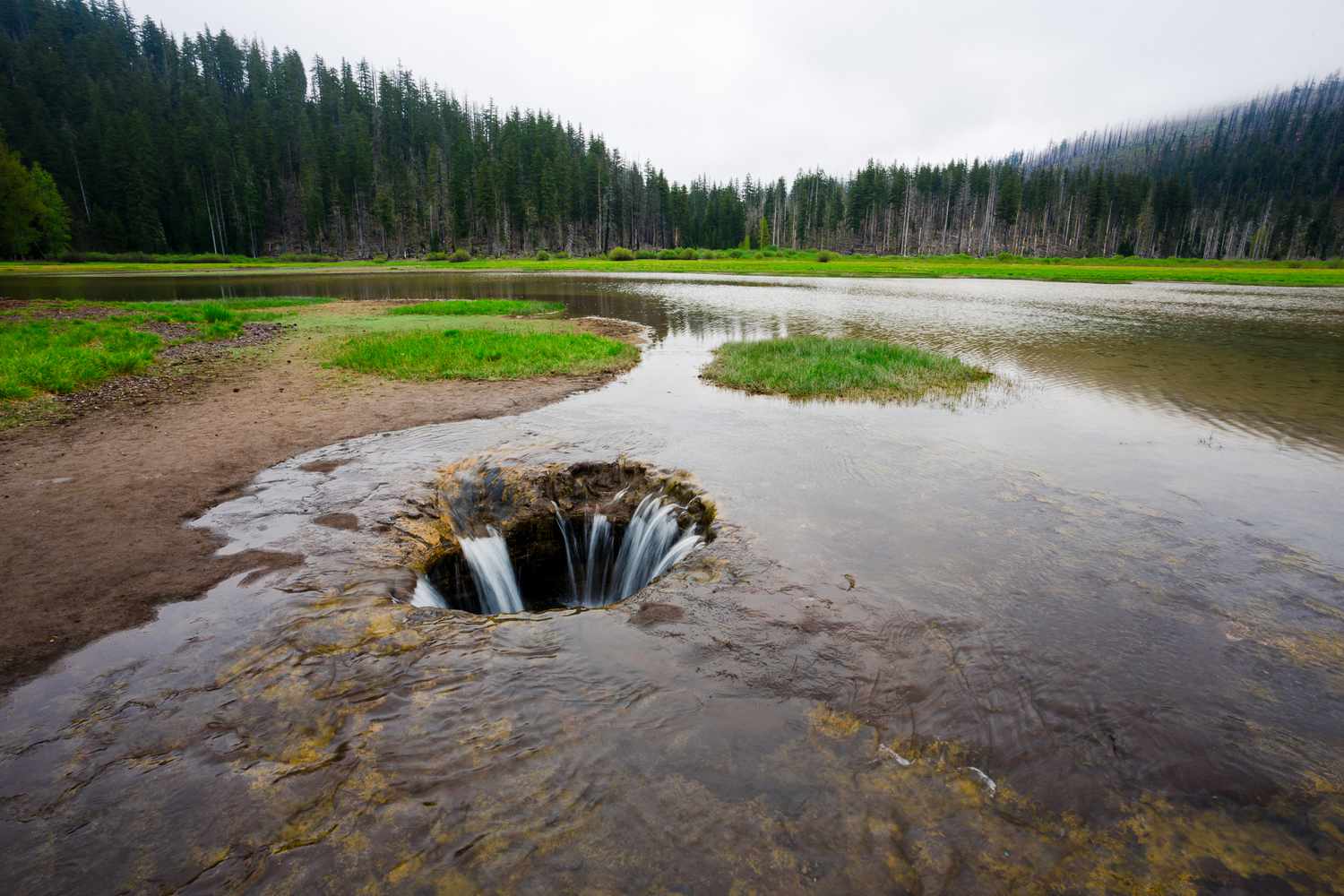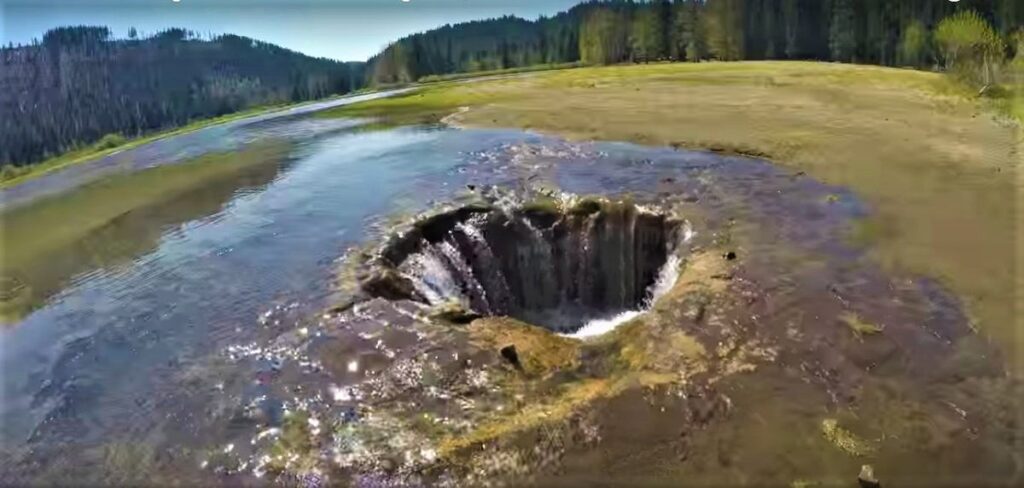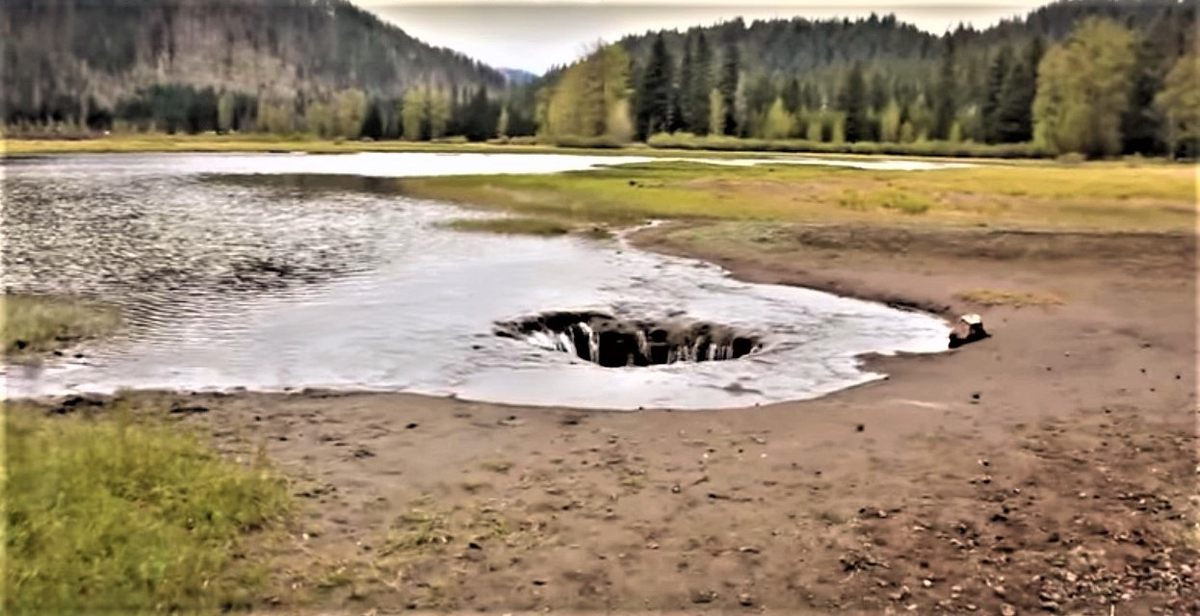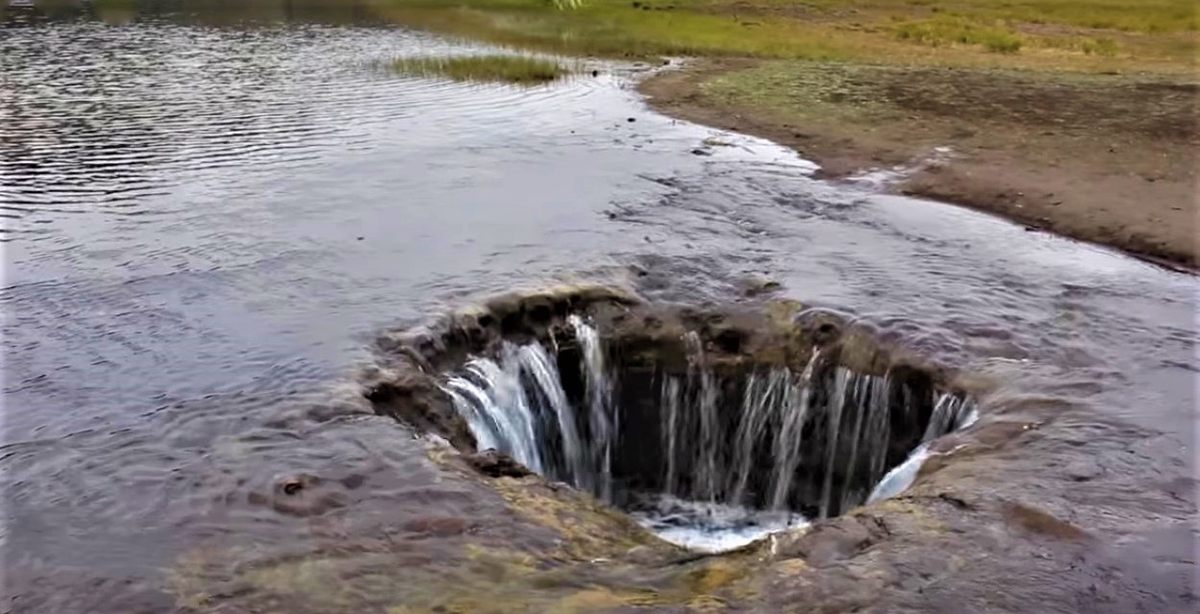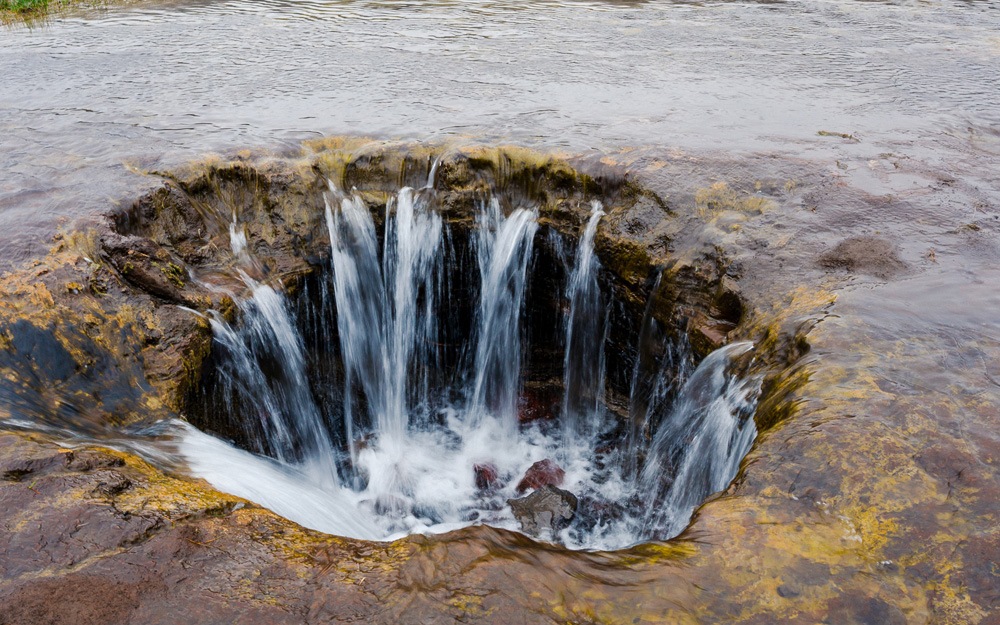Oregon’s ‘Lost Lake’ eerily disappears once a year
Every winter, Lost Lake in Oregon drains itself down a six-foot hole. The hole is a lava tube, and no one knows exactly where it leads. Lost Lake is one of several self-draining lakes in Oregon.
Lost Lake, a body of water in Central Oregon, gained its name and national notoriety for its peculiar habit of draining itself once a year. In the winter, it is a normal lake — indistinguishable from any other — but in the summer, the lake disappears into a hole and the basin becomes a meadow.
The Washington Post’s Justin Wm. Moyer explains the geological phenomenon behind the pattern:
“It fills up in the winter, when input exceeds the rate of draining, and then it goes dry and it’s a meadow,” Jude McHugh, spokesman for the Willamette National Forest, told the Bend Bulletin.
Wherefore comes this hole? It’s a lava tube, formed during a volcanic eruption when the surface of a lava flow cools, but hotter lava flows beneath the surface
In other words, when the lake’s inflow exceeds its outflow, the lake is full — when it doesn’t, the lake drains. Scientists don’t know exactly where the water goes, but they suspect it is absorbed into the subsurface.
Some dummies have attempted to plug the hole — we’re not sure why but we assume it’s part of some kind of primitive urge that leads to boys stuffing things into other things — and U.S. Forest Service staff have found auto parts and other trash in the mouth of the lava tube.
“If anyone was ever successful at plugging it — which we’re not sure they could do,” said McHugh, “it would just result in the lake flooding.” source
Oregon’s Mysterious ‘Disappearing Lake’ Explained
EVERY YEAR, IN THE HEART of Central Oregon’s Cascade Mountains, there is a lake that mysteriously drains down a hole. It fills up to capacity each winter, quickly starts to drain every spring, and transforms itself into a quiet meadow by summer.
Lost Lake, near the small town of Sisters and the Hoodoo Ski Resort, is a 79-acre watery haven during the rainy months. Streams and creeks are running high and fast, and this mountain basin fills up like a bathtub. When the rains slow down, so do the streams, but the cycle of the lake doesn’t stop there. The water recedes, pours into a 7-foot wide hole, and simply disappears.
Geologists speculate the culprit is a collapsed lava tube created during a period of intense volcanic activity over 12,000 years ago. The tube has formed a slow drain that feeds into the rock-hard honeycomb of old lava underfoot (or under-lake), the water running into a tributary of the McKenzie River and surrounding aquifer, eventually ending up 6 miles away in Clear Lake.
When Lost Lake is gulping water in winter it can keep up with the constant draining. But by spring, when flow is low and the drain is wide open, the lake lives up to its name. One request: please don’t try and plug the hole. It won’t work, and it only makes more work for the Forest Service. They work hard enough already.
Know Before You Go
There is more than one Lost Lake in Oregon, so be sure you’re heading to the right one. This one is about 25 miles northwest of the center of Sister (which is about 80 miles northeast of Eugene). Follow US-20 going west and turn right onto NF-835 that wraps around the lake. About half a mile along there is a Day Use parking area on your left, and the hole can be found off to your right. Lost Lake is also near Hoodoo Ski Area. It drains each year in early spring. source
During the rainy fall and winter, most Oregonians probably don’t give much thought to Lost Lake, a shallow lake surrounded by pine trees that sits near a highway.
But drivers might do a double take during the summer. During the dry months, the 85-acre (0.34 square kilometers) lake vanishes and turns into meadow.
The reason? Two hollow lava tubes at the bottom of the lake are constantly draining the lake dry, much like a bathtub left unplugged.
“The lakebed begins to fill in the late fall, when the amount of rain coming in starts exceeding the ability of the lava tubes to drain off the water,” said Jude McHugh, a spokeswoman for the Willamette National Forest in Oregon. “And it continues to fill all winter long in a series of rain or snowstorms.”
As the rainy season peters out, the 9-foot-deep (2.7 meters) lake loses its water source, and water disappears down the lava tubes until it’s gone, McHugh said. The lake’s watery boom-and-bust cycle repeats itself every year, she added.
Lava tubes aren’t uncommon in Oregon. The state is home to the towering Cascades, a range of mountains and active volcanoes that extends from southern British Columbia to Northern California.
When lava streams flow down a volcano the outside crust cools as it makes contact with air. Hot lava continues to flow under the hardened crust, “kind of like a subway tunnel,” McHugh said.
After the hot lava drains away, a hollow tube remains. Some lava tubes become a unique ecosystem for animals and others attract tourists. Lava Beds National Monument in Northern California has “all kinds of lava tubes,” McHugh said. “Little guys literally a foot [0.30 m] across, and ones you can walk in that are just massive.”
But Lost Lake, located about 130 miles (209 km) southeast of Portland, sports just two small lava tubes. The lake likely formed about 3,000 years ago, when lava flowing from a volcanic vent blocked a river channel and created the lake, McHugh said.
“Several small streams feed into the lake intermittently, but the lava tube drain holes are the only known outlets,” McHugh said.
It’s not entirely clear where the drained lake water goes, but researchers have an idea. It likely falls down the lava tubes and seeps through layers of cracked volcanic rock as groundwater, McHugh said.
Lost Lake sits on volcanic rock that formed about 12,000 years ago, she said. When this “young” rock formed, it was filled with gas bubbles that left behind pores as they escaped into the atmosphere. The lava also cracked and fissured as it flowed over the terrain, she said.
It takes roughly seven to 10 years for water to filter down through all those cracks and pores, McHugh said.
“Here in western Oregon, it pops out at the valley floor and supplies drinking water and important habitat for humans, fish and all kinds of species,” she said. “That water that fell today, there’s some kid that’s going to be born tomorrow that’s going to be drinking it when he’s 10.”
However, people aren’t always respectful of lava tubes. At Lost Lake, some people have tried to plug the drainage holes and have also thrown trash into the lake over the years, McHugh said.
“We do not want to interfere with natural processes, and we very much discourage that,” McHugh said. What’s more, even if a plug did work, the lake would likely overflow and flood the nearby highway, she said. source
